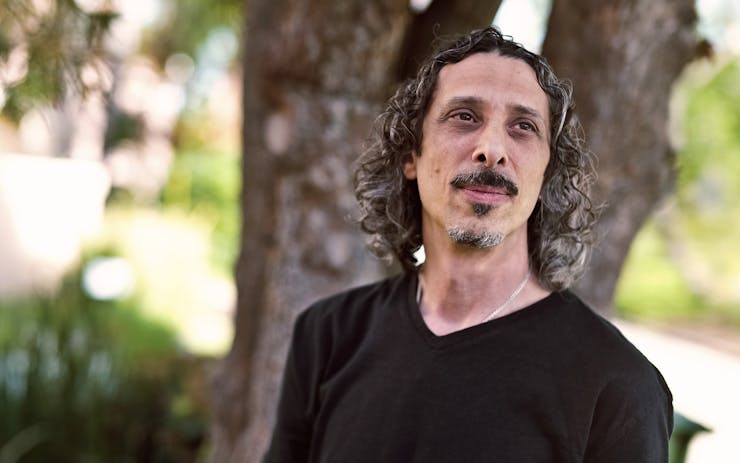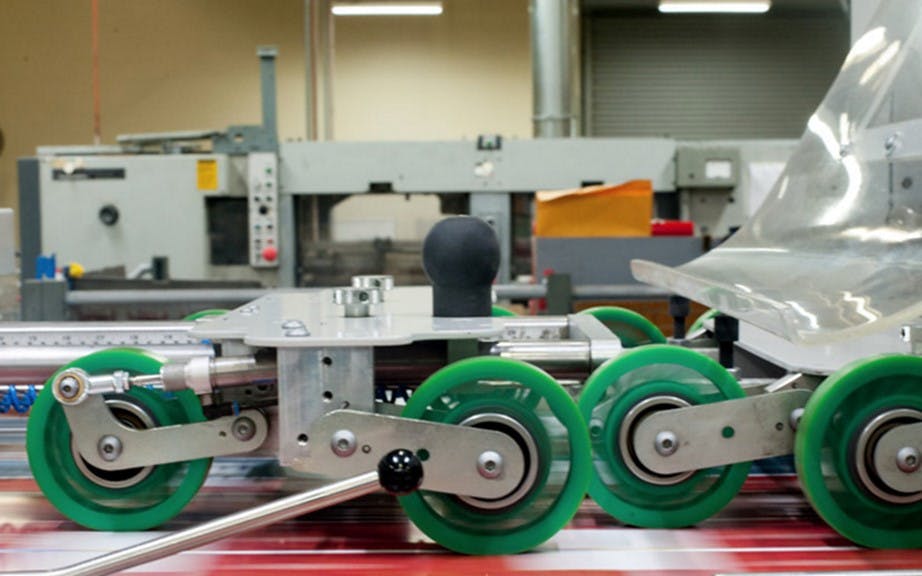Veganics is a growing technique that uses no animal by-products. As the medical cannabis marketplace rapidly expands, veganic methods are gaining traction with growers concerned with healthier medicine. Many smokers swear it creates a much more flavorful flower.
Cannabis cultivator Kyle Kushman, winner of 13 Cannabis Cup titles for his Strawberry Cough strain, advocates growing veganic versus just organic. Here’s the main difference between the two: while veganic is still organic, by growing without any animal by-products (which organic fertilizers carry), veganic nutrients can result in cleaner, stronger, and more sustainably-grown medicine. Anyone, including myself, who has smoked the Strawberry Cough will testify it’s incredibly smooth and potent.
We spoke with Kushman to learn more about the benefits of growing veganic.
Leafly: What inspired you to turn towards growing veganic?
Kyle Kushman: It fell in my lap. I had a friend, Hippy Ray, and he and his girlfriend were vegans and they lived up in northern California. One day he said, “Canna came out with a bio line, it’s all vegan.” At the time, I didn’t care because I always made my own nutrients or combined things from across the spectrum. I didn’t really feel like I needed a new nutrient.
But I went and I tried the soil, this vegan soil, that didn’t contain any perlite or man-made components. I liked the soil so much that I ended up trying the nutrients. I was already an organic gardener and I spanned the whole gambit. I’ve grown just about every style, from aeroponic to hydroponic, from pebbles to dirt, from full synthetic to 50/50 synthetic.
What were the significant changes in your grow once you went veganic?
Kushman: The difference in my veganic crop was noticeable from the first time. It seemed to me that the plants were healthy, the growth rates were actually higher, the leaves were raised higher than ever, and they had this flavor. It has to do with the processing of the nutrients.
The plant expends much less energy metabolizing veganic nutrition as opposed to organic nutrition. Organic nutrition is wonderful, but it relies on decomposition and enzymatic processes to break them down and to fully curate nutrients not available by the plant.
Veganic nutrition is nearly 100% bio-available from the get-go. It’s like the difference between Thanksgiving dinner and sushi dinner. Both can be nutritious, but you have to admit that after you have Thanksgiving dinner, you need to sit on the couch and wait for your body to create all the digestive enzymes to get it going. But, no matter how much you gorge yourself on sushi, 10-15 minutes later, you get energy from that sushi because it’s so easily metabolized by your body.
Because they expend less energy metabolizing nutrition, the plants have more energy to spend creating volatile oils and terpenes. That’s why the terpene levels are higher.
Why do the plants biologically spend less energy?
Kushman: There’s less waste product around each molecule. Outdoors organic nutrition is wonderful. It’s inextricably intertwined with farming and there’s nothing wrong with it, assuming that the organic inputs are actually clean.
That’s the issue; the stuff coming out of the back ends of animals isn’t as clean as it used to be. It’s loaded with antibiotics, hormones, and pesticides. If you’re getting your guano from some far off global conglomerate, it’s loaded with heavy metals. Our veganic produce is testing sometimes up to 1,000 times lower in heavy metal content than the best organic produce. It’s really about cleanliness for the environment.
Growing veganic is more sustainable.
Kushman: When full-on legalization comes, millions of new growers are going to come online and live in high-rises in like Charlotte, New York, and Chicago. They’re going to google “cannabis cultivation” and they’re going to want to grow organic cannabis, but they don’t have space or time to have bubbling buckets of brew and compost in their house.
What are growing residues and how are they affected by growing veganic?
Kushman: Residues are contaminants of any kind, which are stored up salts and nutrients in the plants, [namely] heavy metals. Residues can also come from nefarious ingredients that we all know are put into nutrients by companies. We’ve all heard they don’t list all their nutrient ingredients, and then there’s the [grower] who can add contaminants through sprays and other products.
It’s really about growing a product that we call medicine that’s actually good for you, that can be tested and verified, and can be used by people with extremely high sensitivities to extremely low levels of contaminants. I’ve had enumerable people come up to me, and they’d say, “Thank you, I go from dispensary to dispensary to find one I can smoke that doesn’t give me a headache.”
In some people, it can cause nausea; it can exacerbate Crohn’s disease. The average person probably isn’t going to be bothered by 2-5 parts per million of contaminants, but when I can say that ours ranges between 200-600 parts per billion, that’s about 100 times less. That makes a difference for people who are compromised in any way, like the autistic children that I’ve worked with at the National Foundation for Autism. That’s why I’ve continued working with them for so long, because they truly can appreciate medicine that has virtually undetectable levels of heavy metal.
When you grow veganic, do you find there to be adverse effects for the plant – for example, with pest control or disease?
Kushman: Absolutely not. It’s the opposite. My theory has always been that the healthiest plants are growing to grow the fastest. They’re going to be the most potent and heal the best. That’s what we’re growing; we’re growing the healthiest plants possible.
What’s the difference in the look?
Kushman: Most of the cannabis on commercial market is immature for many reasons. It’s from impatience, from people pulling it down early who don’t cure. But it’s also from the plant not being able to fully progress through each stage of life.
Many people think there’s only two stages: there’s the vegetative stage and there’s the flowering stage, but that’s not true. There’s actually early vegetative, mid vegetative, and late vegetative, and early flowering, mid flowering, and late flowering. They’re all highlighted by different levels of growth hormones and stimulators within the plant.
As you know with your own body, if you’re very healthy then you will have a lot more energy and you will be able to do more things. If you’re bound up in any way, then you’re not going to be able to do many things. If the plant is not wanting for anything, it more easily transfers to each stage of growth. Meaning, by the time you get to the end, and specifically if you look at #Vegamatrixfade, you’ll see hundreds, if not thousands of different users who have input plants that they grow indoors that look like they were grown outdoors. They have the natural fall color expression that plants get when they naturally fluoresce and acquiesce, into their dying stages of life. They’re not necrotic at their fifth week and they’re not all crispy by the sixth or seventh week – we’re just trying to get through the eighth week so that the trichomes look like they’re mature and ripe.
Know the plants have actually fully progressed through each of their growth stages and they’re fully maturing. That’s how you get higher terpene profiles and flowers that have these amazing fall colors. They were able to fully process everything. They weren’t overfed, and they feed on themselves at the end of the season just like fall leaves. It’s a pretty amazing thing that so many growers get the same type of results.






